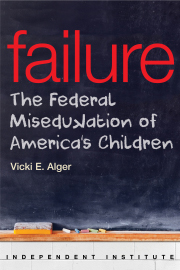Hillary Clinton’s free college plan is long on promises but short on specifics - like who’ll pay for it.
Maybe the Clinton Foundation could foot the bill. After all, it received at least $500,000 from Arizona State University, not to mention tens of millions more from 180 other donors who lobbied the State Department when Clinton was in charge. If there’s one thing the Clintons understand, it’s how to generate free cash.
But not even the Clinton Foundation, with nearly $333 million in reported net assets, could afford Clinton’s college give-away, which she projects will cost $350 billion over the next 10 years.
Under the plan, officially dubbed the New College Compact, in-state tuition at public two-year and four-year colleges and universities would be free for students whose families earn $125,000 or less annually, roughly 80 percent of all American families.
The remaining 20 percent of American families, the supposed rich under Clinton’s plan, would foot the bill.
Additional tax funds, interest rate cuts, repayment caps and loan forgiveness schemes would be used to make college a virtually debt-free experience.
The projected cost of Clinton’s higher education free-for-all is bad enough. But it is probably just a down payment.
In reality, the plan doesn’t come close to covering public tuition and fees, which now total more than $70 billion annually - twice the projected yearly cost of Clinton’s plan. Nor would it fix the staggering student loan debt problem, which currently exceeds $1.3 trillion.
One of the worst elements of the plan is that college degrees will become about as meaningless as free high school diplomas.
Some 75 percent of U.S. high school graduates are not deemed college-ready in English, reading, math and science.
Many of those who go on to college have to enroll in remedial classes, increasing the likelihood they’ll drop out. The proposed Clinton subsidies will encourage more of the same.
If the past six decades have taught us anything, it’s that we can’t subsidize our way to college affordability, much less quality. The federal government’s reach into education has grown steadily since 1958, and with it, college costs that have increased at about twice the general inflation rate.
That’s because federal subsidies allow colleges and universities to increase prices with impunity. For all of Washington’s finger-wagging, few politicians are going to support withholding - much less cutting - federal aid. And colleges know it.
Perhaps the greatest cost of all to Clinton’s free college plan is nurturing the notion that a college degree is an entitlement, not something earned.
At most public colleges and universities, the majority of undergraduates already receive financial aid. And what are taxpayers getting for their investment?
- In the past year or so alone, students at the University of California at San Diego had time for a topless “Free the Nipple” rally.
- California Polytechnic State University students organized a three-day “Shit In” to promote gender-neutral bathrooms.
- Students at the University of Texas at Austin traded in their longhorns for sex toys to protest a new campus carry law.
Such activities are taking place on campuses nationwide, largely on the taxpayers’ dime, at a time when an alarming majority of professors report their first-year college students can’t distinguish between fact and opinion, and at least 20 percent of undergraduates won’t complete their four-year degrees in six years.
With federal debt quickly approaching $20 trillion, Clinton’s proposed give-away is something our country can’t afford.
Yet the full cost of the Clinton plan can’t be measured entirely in dollars and cents.
Indeed, the full cost is incalculable because Clinton is trying to satisfy an insatiable appetite for entitlements that feeds off the hard work and sacrifice of others and is constantly demanding more.









